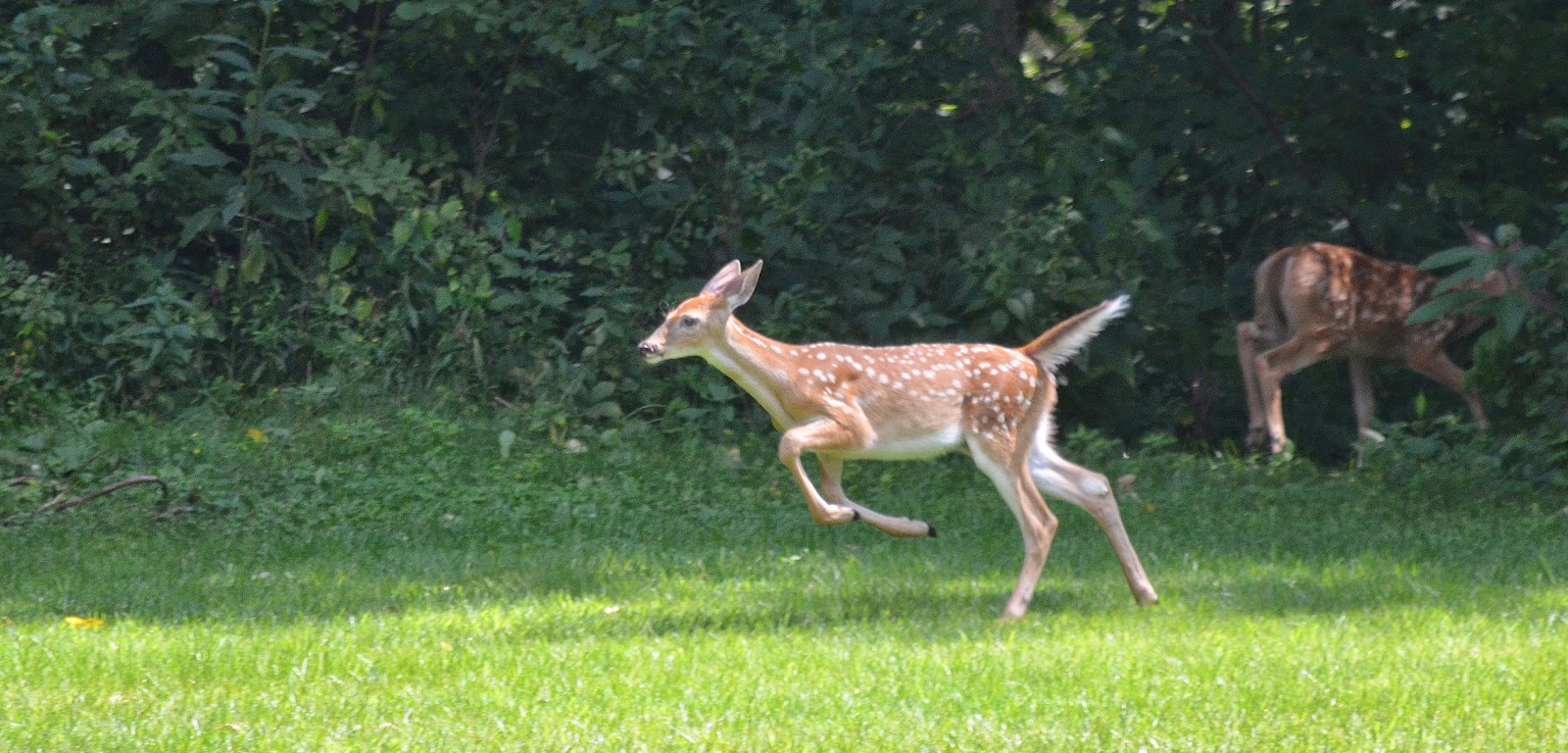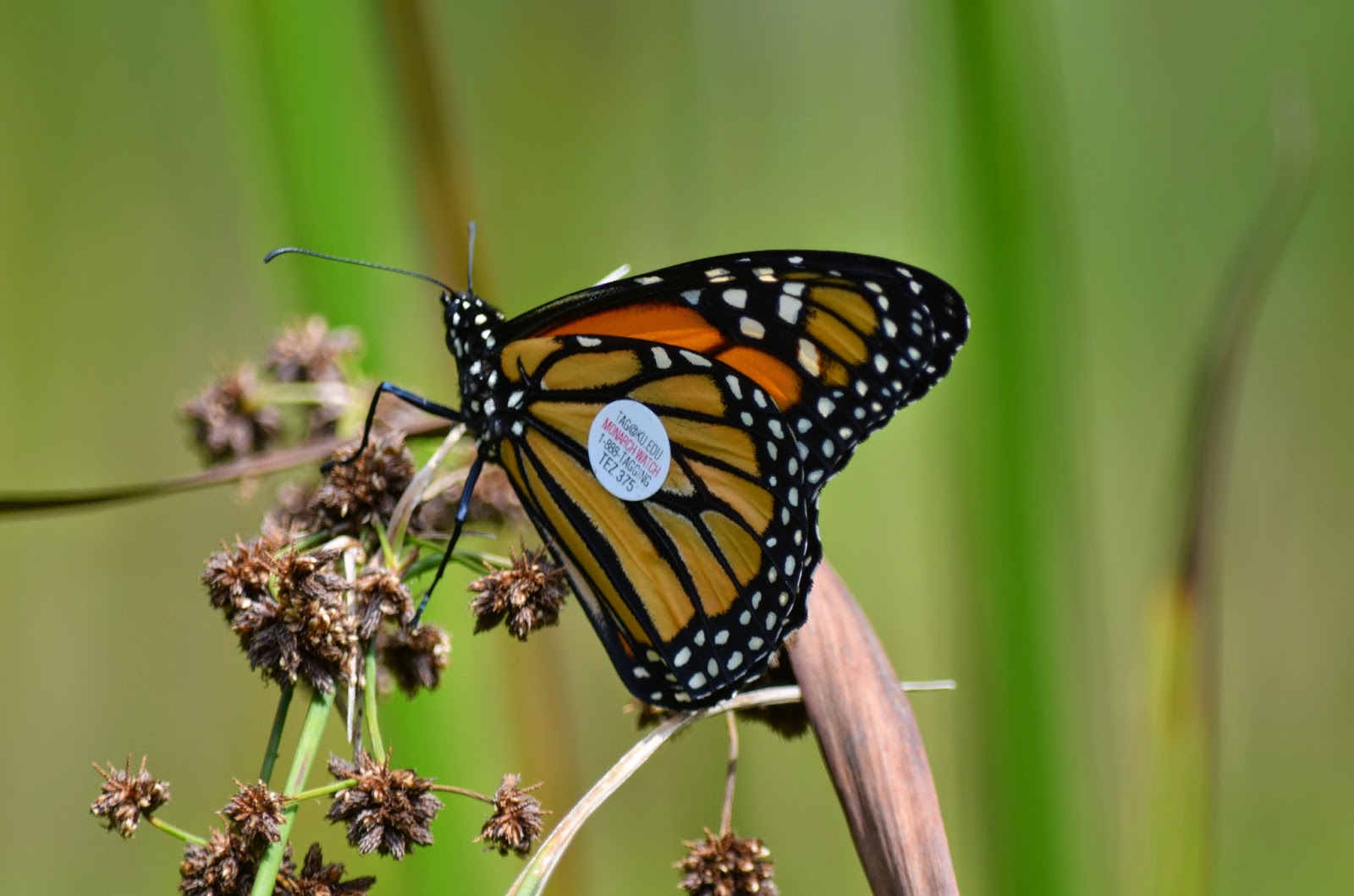One of the most enjoyable things about working at Fox Island County Park is sharing nature with young visitors. Today some of our young visitors were able to see two White-tailed Deer fawns (Odocoileus virginianus) feeding and romping in the lawn east of the Nature Center. While very aware of the people watching from the front of the Nature Center the nearly full grown fawns seemed to feel safe enough to come out in the open with occasional trips back into the wooded area.
This fawn will soon loose it's spots as fall approaches. Deer will be feeding heavily right now as they need to add fat for the approaching winter. White-tailed deer are the most economically important wild mammal in the United States generating billions of dollars annually in hunting dollars. Whitetail deer were hunted heavily in the mid-1800's and populations decreased to around 1 million nation wide. Today's numbers are in the estimated range of 25 to 27 million nationally.
White-tailed deer have excellent senses of sight, hearing and smell. This fawn is licking it's nose to improve it's ability to to smell the observers standing a few yards away. Deer have about 50 times the number of smell receptors that humans have and a wet nose is a more sensitive nose. Deer also have smell receptors in the roof of their mouth.
When startled White-tails lift their tail and show the "flag" that gives them their name. The hairs also
are fanned out and the tail is moved back and forth to alert other deer to beware. Many times the only sight you have of a deer is the white tail bobbing through the woods as it departs the area.
The first fawn was soon joined by it's sibling and began running around obviously burning off excess energy before disappearing back into the woods. The mother never came out onto the lawn but rest assured she knew where they were every moment. Before the kids left the park I was able to give each a color print-out of the fawns they were able watch and enjoy.


















































